The coat of a wolfhound is stiff and rough, rough to the touch, like a wire, especially on the chin and eyebrows. Representatives of the breed are characterized by long hair all over the body, but on the muzzle, the hair is slightly shorter, but there is no impression of a strong overgrowth.
The coat of the Irish wolfhound is double, closer to the skin, dense, in puppies a little softer than in adult dogs, and is formed within 3-4 years.
The coarse and coarse coat is caused by environmental conditions. Such wool repels moisture, thereby providing protection from rain as well as wind. However, among the Irish wolfhounds, there are also dogs with soft, even silky hair, completely atypical for this breed in the modern world, although previously soft hair was not considered a disadvantage.
Depending on the conditions of detention, as well as age, the density of the coat, however, as well as the length, is different. Outdoor dogs tend to have longer and thicker coats. Without proper care, namely without combing, plucking, the dog looks sloppy and loses its attractiveness.
Irish Wolfhound Coat Colors
The standard colors of the Irish wolfhound include black, brindle, gray, red, sand (wheat) of various shades, and pure white. As additional colors, there can be all colors found in deerhounds, namely dark gray with a blue tint, sand red, yellow.
Gray Irish Wolfhound

The most common coat color is gray, dark, or light shades. In this case, there may be black hair on the ears, muzzle.
Black Irish Wolfhound
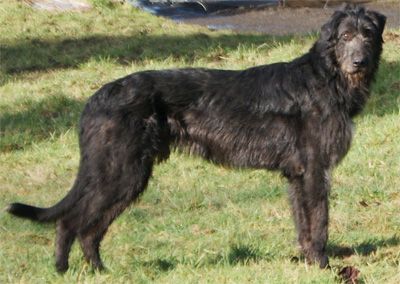
The black wolfhound is distinguished by the black color of the coat, which acts as the main one, but there may be white marks on the chest, paws. However, the markings should not cover a large area, for example, there should be no white “socks”. As it grows older, the hair on the limbs and muzzle may take on a lighter (gray) shade, but the undercoat remains black throughout its life.
Red Irish Wolfhound
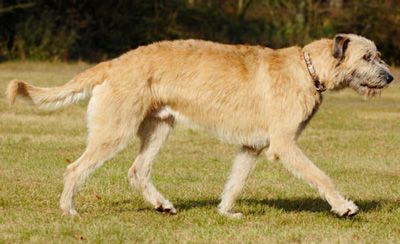
The red Irish wolfhound can have any shade of red, from cream to auburn.
White Irish Wolfhound
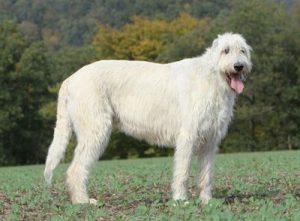
Pure white color is rare, often becoming creamy. White wolfhounds do not have black markings.
Brindle Irish Wolfhound
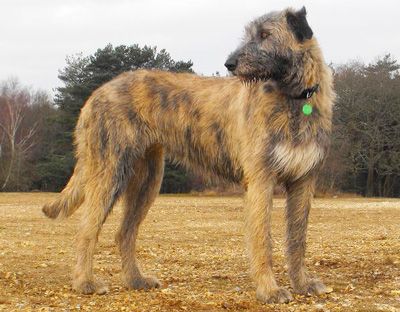
As a puppy, a brindle wolfhound can have a clear pattern, but at an older age, the guard hair can acquire a uniform color and darken. The undercoat will remain striped, but the brindle appearance of the surface coat will be almost imperceptible. The main background ranges from light gray, cream to wheat. Light or dark stripes are visible in the background.
Blue Irish Wolfhound
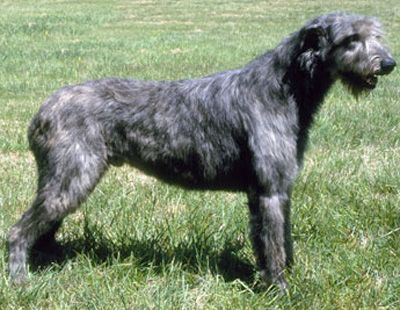
Blue wolfhounds do not exist as such. Usually, gray representatives of the breed have a bluish tint, but any color can have a bluish effect, for example, on the ears.
Sable Irish Wolfhound
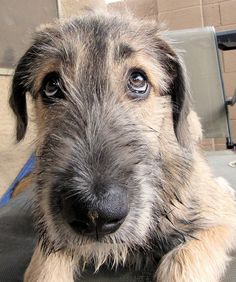
The sable color is distinguished by the fact that the hair has a non-uniform color, that is, at the root of the hair it is lighter, and at the ends, it is darker. Usually, a dark color predominates on the back, sides, tail, tips of the ears, while the rest of the body retains a lighter color.
Black and Tan Irish Wolfhound
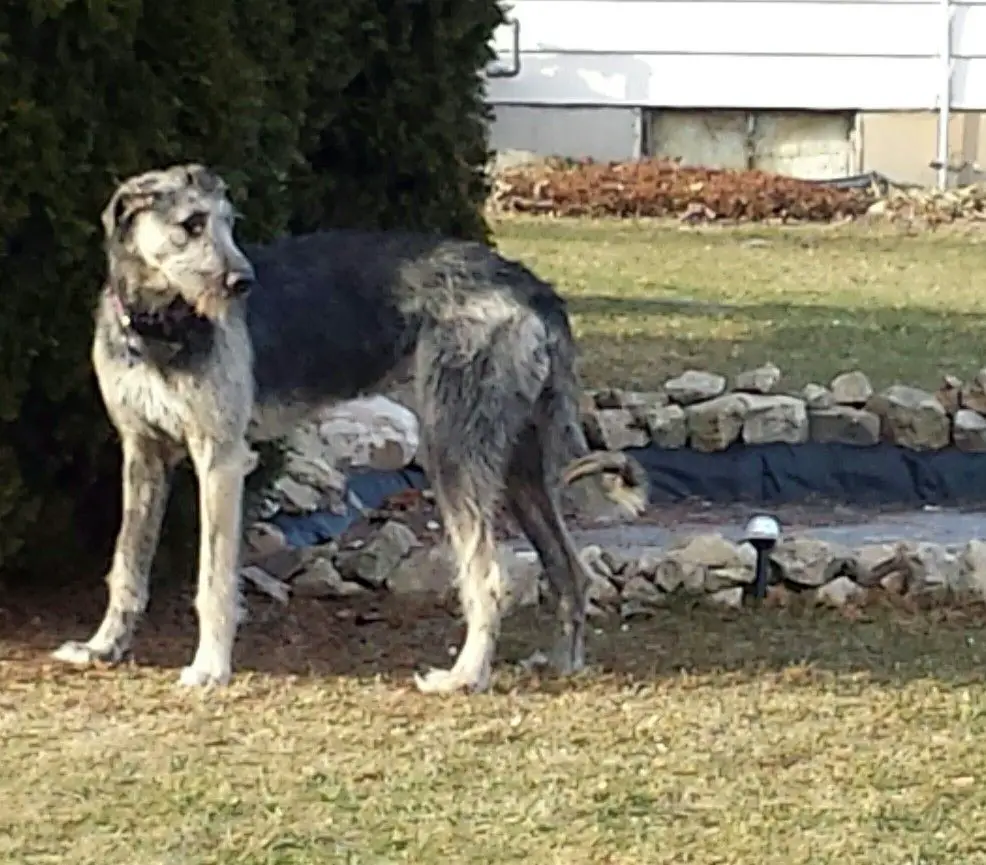
In 1930, black and tan color was considered standard for a certain period of time, but this has long been in the past since later the color was considered unacceptable and was lost over time.
With regard to all standard colors, you should know that light wolfhounds can have dark, up to black tips of the ears, black lips, nose and eyelids, the lower border of the tail, which only emphasize the beauty of the Irish wolfhound color. White spots are permissible on the chest, all four legs, and the tip of the tail. White collars are considered a disadvantage. White markings are common in gray and dark dogs.

